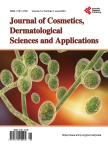Is the Photosuturing Agent, Rose Bengal, a Mutagen?
Is the Photosuturing Agent, Rose Bengal, a Mutagen?作者机构:Department of Dermatology The University of Texas Medical Branch Galveston Texas USA Department of Global Environmental Health Sciences School of Public Health and Tropical Medicine Tulane University New Orleans Louisiana USA
出 版 物:《Journal of Cosmetics, Dermatological Sciences and Applications》 (化妆品、皮肤病及应用期刊(英文))
年 卷 期:2014年第4卷第1期
页 面:24-30页
学科分类:1002[医学-临床医学] 100214[医学-肿瘤学] 10[医学]
主 题:Rose Bengal Photochemical Tissue Bonding Mutagenicity Cytotoxicity Wound Healing Dermatological Surgery
摘 要:Rose Bengal (RB) is a potential photosuturing agent that may improve standard dermatologic surgical closure techniques. However, RB produces reactive oxygen species with photoactivation and its photomutagenic potential must be considered in clinical application. We investigated cytotoxicity, mutagenicity, and singlet oxygen (SO) production of RB on epithelial Chinese hamster ovary cell line. Cells were exposed to RB concentrations: 0.1%, 0.01%, 0.001%, 0.0001%, 0.00001%;irradiated for 400 s using a high-intensity visible wavelength lamp or maintained in the dark. Cell viability was assessed by XTT assay, mutagenicity by HPRT gene mutation assay, and SO production by Sensor Green reagent. RB 0.001% was significantly cytotoxic. Viabilities were uninfluenced by ≤0.0001% RB controls, or 30-min incubation. 49% of irradiated cells died after 24-h in 0.0001% RB. At ≥0.001% RB, 90% of cells died. Irradiating 0.00001% - 0.001% RB increased SO;levels dropped significantly between 0.01% - 0.1%. Controls exhibited negligible SO production. HPRT suggested that RB was not mutagenic (0.0001%, 0.00001%);SO induction increased between 0.00001% - 0.001%, with reduced production at higher concentrations. Pilot studies suggested irradiated 0.0001% RB is mutagenic in vitro;current data suggest RB is not photomutagenic. The contribution of RB’s cytotoxicity on observed clinical improvement of scars and mutagenic potential remains unclear, necessitating further study.



